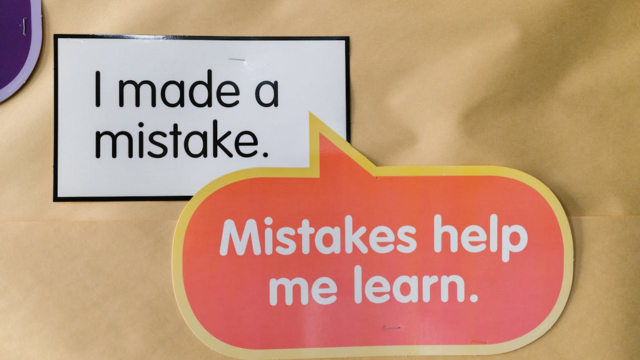
Public Speaking and Social Anxiety
Dec 12, 2024 | Public Speaking
Public speaking can be a dreadful task for many, but for those who experience social anxiety, it can seem like an impossible challenge. Social Anxiety Disorder (SAD) is a typical mental health condition that can somewhat impact a person’s ability to engage in social interactions, including public speaking. However, overcoming these fears and becoming a confident and compelling public speaker is possible with the right strategies and mindset.

This article will analyze the relationship between public speaking and social anxiety, offering practical tips and insights for beginners and advanced speakers. Understanding the connection between social anxiety and public speaking is crucial for developing effective strategies to overcome this fear. Many people with social anxiety avoid speaking in public due to the intense fear of judgment and embarrassment.
However, individuals can build confidence and improve their public speaking abilities by acknowledging these fears and working to address them. This article aims to provide an extensive catalog of social anxiety in the context of public speaking and offer practical advice for managing and overcoming this common challenge.
Understanding Social Anxiety

What Is Social Anxiety?
Social anxiety disorder, also known as social phobia, is described by an intense fear of being judged, embarrassed, or humiliated in social situations. People with social anxiety usually worry excessively about how others perceive them and may avoid social interactions altogether. This fear can be particularly pronounced in public speaking, where the individual is the center of attention.
Social anxiety can manifest in various physical and emotional symptoms, like rapid heartbeat, sweating, trembling, and feelings of dread or panic. These symptoms can fully interfere with daily life and professional responsibilities, especially when public speaking is involved.
Action Item
Start by practicing in front of a supportive friend or small group to gradually build confidence and reduce anxiety.
Understanding the leading causes and recognizing the symptoms of social anxiety is the first step toward handling it effectively. By acknowledging the condition and seeking appropriate strategies and support, individuals can work towards reducing the impact of social anxiety on their public speaking abilities.
The Impact of Social Anxiety on Public Speaking
For individuals with social anxiety, the thought of speaking in front of a public can trigger severe physical and emotional responses. These can include:
- Physical Symptoms: Rapid heartbeat, sweating, trembling, nausea, dizziness, and shortness of breath.
- Cognitive Symptoms: Intense fear of making mistakes, worrying about being negatively evaluated, and anticipating failure.
- Behavioral Symptoms: Avoid speaking engagements, excessive preparation, and reliance on safety behaviors (e.g., reading from notes verbatim, avoiding eye contact).
Understanding these symptoms is the first step toward addressing and managing social anxiety in the context of public speaking.
Overcoming Social Anxiety in Public Speaking

Acknowledge Your Fear
The first step in overcoming social anxiety is to acknowledge and accept your fear. It is a natural response, and many people experience similar feelings. Accepting your anxiety rather than fighting it can help reduce its intensity.
Seek Professional Help
If social anxiety fully impacts your daily life and public speaking abilities, seeking professional help from a therapist or counselor can be beneficial. Cognitive-behavioral therapy (CBT) is particularly successful in treating social anxiety. CBT helps individuals modify negative thought patterns and develop healthier coping strategies.

Gradual Exposure
Gradual exposure to public speaking can help desensitize you to the fear. Start with small, low-stakes speaking opportunities and gradually work your way up to larger audiences. For example, you might begin by speaking in front of a close friend or family member, then move on to a small group, and eventually present to a larger audience.
Preparation and Practice
Thorough preparation can significantly reduce anxiety. When you know your material well, you are more likely to feel confident and in control. Create a detailed speech outline, practice it multiple times, and refine your delivery. The more familiar you are with your content, the less anxious you will feel.
Use Visualization Techniques
Visualization is a powerful tool for decreasing anxiety. Before your speech, take some time to visualize yourself speaking confidently and successfully. Imagine the positive reactions from your listeners and the sense of accomplishment you will feel. This mental rehearsal can help create a positive mindset and reduce anxiety.
Breathing and Relaxation Exercises
Learning to handle the physical symptoms of anxiety is crucial. Deep breathing exercises can help soothe your nerves and reduce physical tension. Practice deep, slow breaths before and during your presentation to maintain a steady and calm demeanor. Additionally, relaxation methods such as progressive muscle relaxation and mindfulness meditation can help decrease overall anxiety levels.
Pro Tip
Focus on your message rather than yourself, shifting attention from your anxiety to the value you’re providing to your audience.
Focus on the Message, Not Yourself
Shift your focus from yourself to your message. Remember that the purpose of your speech is to convey valuable information to your audience. Concentrate on addressing your message effectively rather than worrying about how you are being perceived. This shift in focus can help reduce anxiety and improve your overall delivery.
Join a Speaking Group
Joining a public speaking organization, like Toastmasters, can give you a supportive environment for practicing and improving your speaking skills. These groups offer regular speaking opportunities, constructive feedback, and a community of individuals working to overcome their fears. Engaging with others who contribute to similar challenges can provide motivation and encouragement.
Building Confidence in Public Speaking

Embrace Mistakes as Learning Opportunities
Recognizing that mistakes are a typical part of the learning process is essential. Instead of fearing mistakes, view them as opportunities to learn and grow. Analyze what went wrong, identify areas for improvement, and apply these lessons to future presentations. Over time, your confidence will increase as you become more comfortable with the process.
Develop a Positive Mindset
Cultivating a positive mindset is crucial for building confidence. Practice positive self-talk and affirmations. Replace negative thoughts such as “I can’t do this” with positive statements like “I am well-prepared and capable of delivering this speech.” Aim on your strengths and past successes to build a foundation of confidence.
Engage with Your Audience
Building a connection with your listeners can help reduce anxiety and increase confidence. Make eye contact, smile, and use open body language to engage with your listeners. Promote interaction by asking questions or inviting comments. Seeing positive reactions from your audience can lift your confidence and make the experience more enjoyable.
Action Item
Use deep breathing techniques before speaking to calm your nerves and help you focus on delivering your message clearly.
Record and Review Your Speeches
Recording and reviewing your speeches can provide valuable insights into your performance. Pay attention to your body language, vocal delivery, and overall presence. Identify areas for improvement and make a plan to address them. Watching your progress over time can also be a great confidence booster.
Celebrate Small Wins
Celebrate your achievements, no matter how small they may seem. Each successful speaking experience, no matter the size of the audience, is a step toward building confidence. Acknowledge your growth and reward yourself for your efforts. This positive reinforcement can inspire you to continue improving.
Practical Tips for Effective Public Speaking

Structure Your Speech
A well-structured speech is more accessible and engaging for the audience. Use a clear outline with an introduction, body, and conclusion. Start with a compelling opening to grab the audience’s attention, followed by well-organized points that support your main message. Conclude with a strong closing that reinforces your key takeaways.
Practice Vocal Variety
Monotone diction can make even the most exciting content seem dull. Use vocal assortment to keep your audience engaged by changing your pitch, tone, and volume. Emphasize important points and use pauses effectively to create anticipation and add emphasis. Practicing these vocal techniques can make your speech more dynamic and captivating.
Use Visual Aids Effectively
Visual aids, like slides, charts, and props, can enhance your presentation by making your message more engaging and easier to understand. Ensure your visual aids are clear, relevant, and not overly complicated. Avert cluttering your slides with too much text or data. Instead, use visuals to complement your speech and emphasize key points.

Incorporate Storytelling
Storytelling is a powerful tool for making your presentation more compelling and memorable. People are naturally drawn to stories because they evoke emotions and create connections. Incorporate relevant anecdotes, case studies, or examples to depict your points and make your message more relatable. A well-told story can capture your audience’s attention and leave a lasting impression.
Handle Questions Confidently
Responding confidently to questions demonstrates your expertise and reinforces your credibility. Listen carefully to the question, take the time to gather your ideas, and provide a clear and concise response. If you don’t know the answer, admitting it and offering to follow up later is okay. Engaging with your listeners through Q&A sessions can make your presentation more interactive and informative.
Conclusion

Public speaking can be a challenging endeavor, especially for those with social anxiety. However, overcoming these fears and becoming a confident and compelling public speaker is possible with the right strategies and mindset. Understanding the nature of social anxiety and implementing practical techniques such as thorough preparation, gradual exposure, and positive visualization can help reduce stress and build confidence.














































Recent Comments